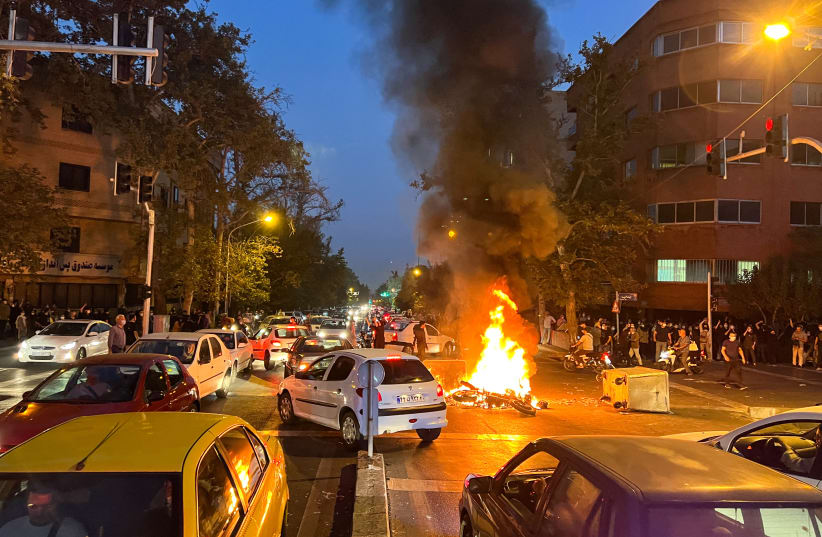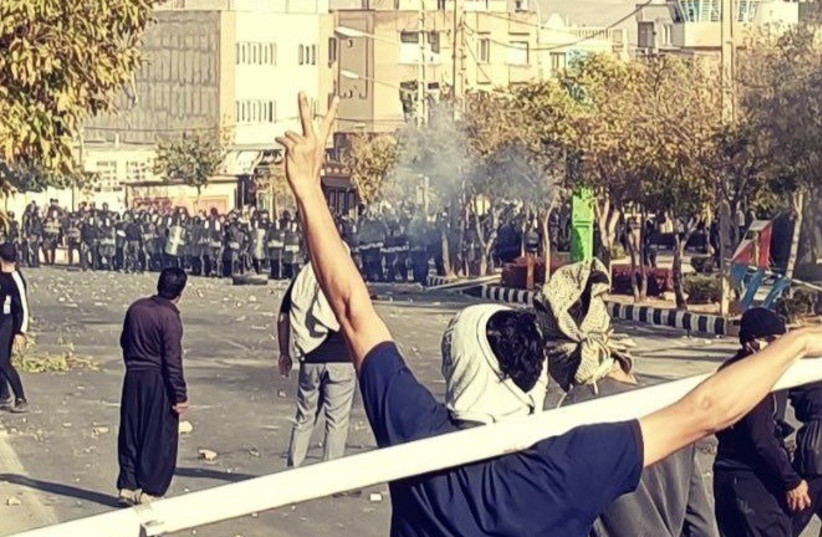Iranians protested in the southeastern province of Sistan-Baluchistan province on Friday to mark a September 30 crackdown by security forces known as "Bloody Friday," as nationwide demonstrations calling for the end of clerical rule persisted.
Amnesty International said security forces unlawfully killed at least 66 people, including children, in the incident after firing live ammunition, metal pellets and teargas at protesters in the provincial capital Zahedan, a flashpoint in the unrest gripping Iran.
Anti-government demonstrations erupted in September after the death of a Kurdish woman, Mahsa Amini, who had been detained by morality police for allegedly flouting the Islamic Republic's strict dress code imposed on women.
The protests quickly turned into a popular revolt, with people ranging from students to doctors to lawyers to workers to athletes taking part.
The government, which has blamed Amini's death on preexisting medical problems, sees the protests as fomented by Iran’s foreign enemies including the United States, and has vowed to reestablish order.
It accuses armed separatists of perpetrating violence and seeking to destabilize the Islamic Republic.
Some of the worst unrest has been in areas home to minority ethnic groups with long-standing grievances against the state, including Sistan-Baluchistan and Kurdish regions.
Where did these protests take place?
Zahedan, close to Iran’s southeastern border with Pakistan and Afghanistan, is home to a Baluch minority estimated to number up to 2 million people who have faced discrimination and repression for decades, according to human rights groups.
The Sistan-Baluchistan region is one of the country’s poorest and has been a hotbed of tension where Iranian security forces have been attacked by Baluch militants.
The provincial security council said that armed dissidents had provoked the Zahedan clashes, leading to the deaths of innocent people, but admitted "shortcomings" by police which it said led to dismissals.
Social media videos purported to be from the town of Saravan in Sistan-Baluchistan showed protesters wearing traditional Baluch robes calling for the death of Iran's Supreme Leader Ayatollah Ali Khamenei and the Basijis, the militia he has unleashed against protesters.
Amnesty International has recorded the names of at least 100 protesters, bystanders and worshippers, including 16
children, killed by security forces in Sistan and Baluchistan province since September 30.
"Where did the military forces get trained to shoot people? Today it has become clear that people were killed unjustly," Molavi Abdolhamid, Iran's most prominent Sunni cleric and a long-time critic of Iran's Shi'ite leaders, said in his Friday prayer sermon in Zahedan. "Authorities must condemn this crime, and those who ordered (the events of) Bloody Friday and its perpetrators must be brought to trial," said in a Friday prayer sermon.
"Where did the military forces get trained to shoot people? Today it has become clear that people were killed unjustly. Authorities must condemn this crime, and those who ordered (the events of) Bloody Friday and its perpetrators must be brought to trial."
Molavi Abdolhamid
It appeared tensions could rise again in Zahedan.
The ground forces commander of Iran's elite Revolutionary Guards, Brigadier General Mohammad Pakpour, told a gathering of Sunni and Shi'ite tribal elders and religious leaders in Zahedan: "The path toward calm in the area is the responsible presence of religious leaders."
"Our spiritual leader, whether Shia or Sunni, has to pay attention to what he says," Pakpour said, as reported by state television.
Several social media videos showed a gathering at Tehran's Behesht-e Zahra cemetery to honor Amir Mehdi Farrokhipour, a 17-year-old allegedly killed by security forces 40 days ago. Mourners were shown Chanting "Death to the dictator" after singing a patriotic song.
The activist new agency HRANA carried a video which it said was from the town of Rask, with protesters attending to a comrade shot in the back and another in the arm.
Videos posted on social media showed protests in Khash, where at least 18 people were killed by security forces on Nov. 4 according to Amnesty International, and other southeastern cities including Iranshahr where protesters were seen running to avoid tear gas cannisters amid sounds of possible gunfire.
The government has not responded to the Amnesty report.

